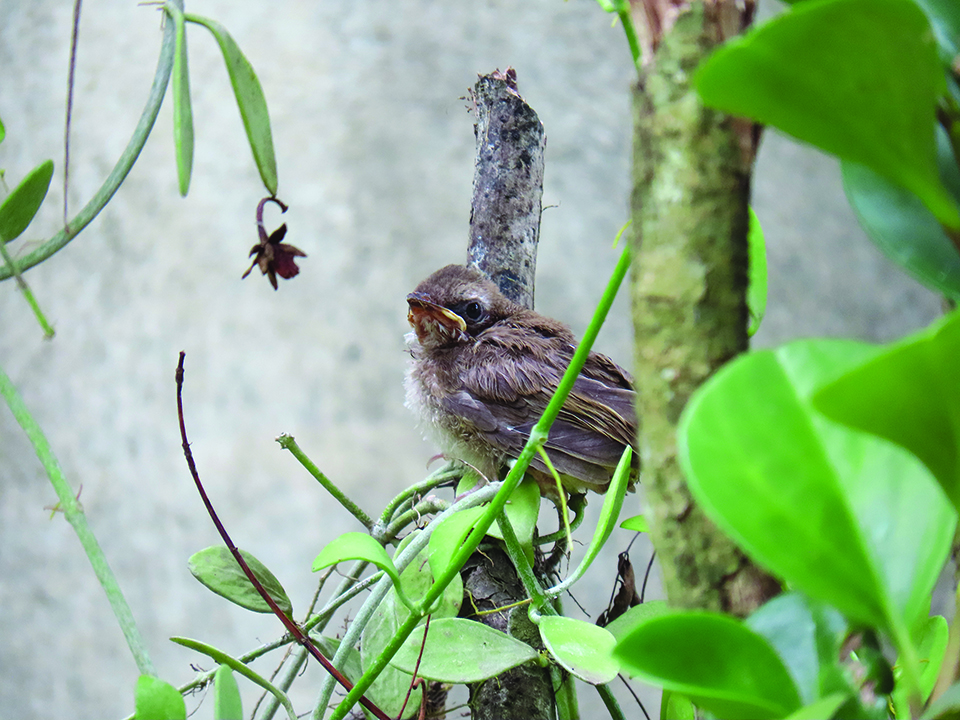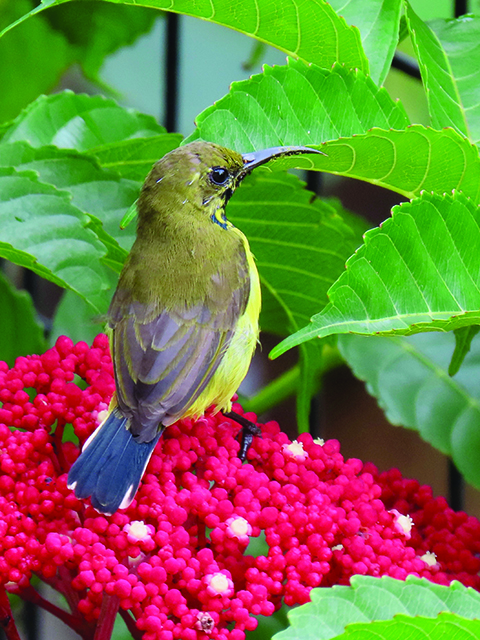During nesting season, it’s not uncommon to find fledgling birds on the ground. Our first instinct may be to “rescue” the bird, take it home, or bring it to a wildlife rescue center. But doing so may do more harm than good.
Most well-meaning fledgling rescues can be considered kidnappings, so get to know what you should do when you find a fledgling on the ground.

NESTLINGS, HATCHLINGS
If the baby bird is pink, featherless, and the eyes are still shut, that’s a hatchling. Some baby birds already have their eyes open and have a few tufts of feather growing, making them look awkward – they are nestlings.
Both hatchlings and nestlings are much too young to be outside the nest, so try to find their nest nearby and return them to it. Fledglings, on the other hand, have more feathers and can hop around or walk on the ground.
WHAT TO DO WITH A BABY BIRD
It’s normal for a fledgling bird to jump out of their nest and hang around on the ground. When they wander around their nest, it might look like they have been abandoned, but it’s highly likely that their parents are watching over them from a nearby tree or are on their way back from fetching food, according to a 2018 article by Benji Jones for Audubon.
If you see a fledgling, the best thing you can do is leave it alone. If the bird seems to be in a dangerous place – perhaps it’s on a road, or it’s raining hard – you can help by putting the baby on a low branch at a nearby tree or shrub.
You might be able to find the nest as well, but remember, this is an active and exploring young bird who will likely jump back out again. It’s also unlikely that the parents will try to approach their chick while you are nearby, so make sure that you relocate the fledgling as quickly and as carefully as possible, so that they can get back to their feeding routine.
If you see a young nocturnal fledgling like an owl or a nightjar on the ground, their parents might not drop by to feed like with daytime birds. Don’t worry! They’re sure to be watching over. Just place the young bird on a low branch nearby and let the parents take care of the rest.

OVERLOADING WILDLIFE RESCUE CENTERS
Some runaway baby fledglings might look injured and it may seem like a good idea to bring them to a wildlife vet. However, we have to remember that wildlife rescue centers in the Philippines are usually already overwhelmed, especially as they help animals rescued from illegal wildlife trade.
But don’t fret. There are a number of other things to do to help baby birds. Keeping dogs and cats inside will help prevent them from attacking or playing with any lone fledgling. You can also make it a habit to check under your cars before backing up, in case baby birds choose to hide underneath. If you know that there’s a baby bird learning to fly around your outdoor spaces at home, you can also put up warning signs around your house to remind your family that there are feathered friends sharing your space.

HOW TO MAKE YOUR HOME MORE WELCOMING TO BIRD FAMILIES
If you often see baby birds in your backyard or garden, this could be a sign that your house is a safe space for wildlife. To help it become a cozier home for them, you might want to try and add more undergrowth plants to your garden. These are shrubs and small trees planted in the ground where baby birds can climb into and hide from predators.
Planting small, native fruiting trees like Mali-mali (Leea philippinensis) is one way to provide nectar and fruits for your bird neighbors. If you have any large fruiting trees like mango, rambutan, and banana, these may also be a favorite spot for frugivores, or fruit-eating birds.
It would also help to add a bird bath to your backyard. The tired parents are sure to welcome a cool drink or a quick bath, especially in the summer. You can easily make a bird bath using a large shallow bowl filled with water. Just remember to change the water regularly to prevent mosquitoes from breeding there.
Next time you, your family, or a friend see a fledgling bird on the ground, you know what to do! Nature really knows best, and everyone can do their part by keeping backyards wild and filled with native vegetation.Friends

ARE BIRDHOUSES A GOOD IDEA?
Bird feeders and birdhouses might sound like a great idea (and you may see a lot in places abroad) but local bird watchers and urban biodiversity advocates advise that it would be better to set up bird baths and plant native trees instead. These are more natural and will benefit more backyard wildlife, such as butterflies, bees, moths, and skinks.






